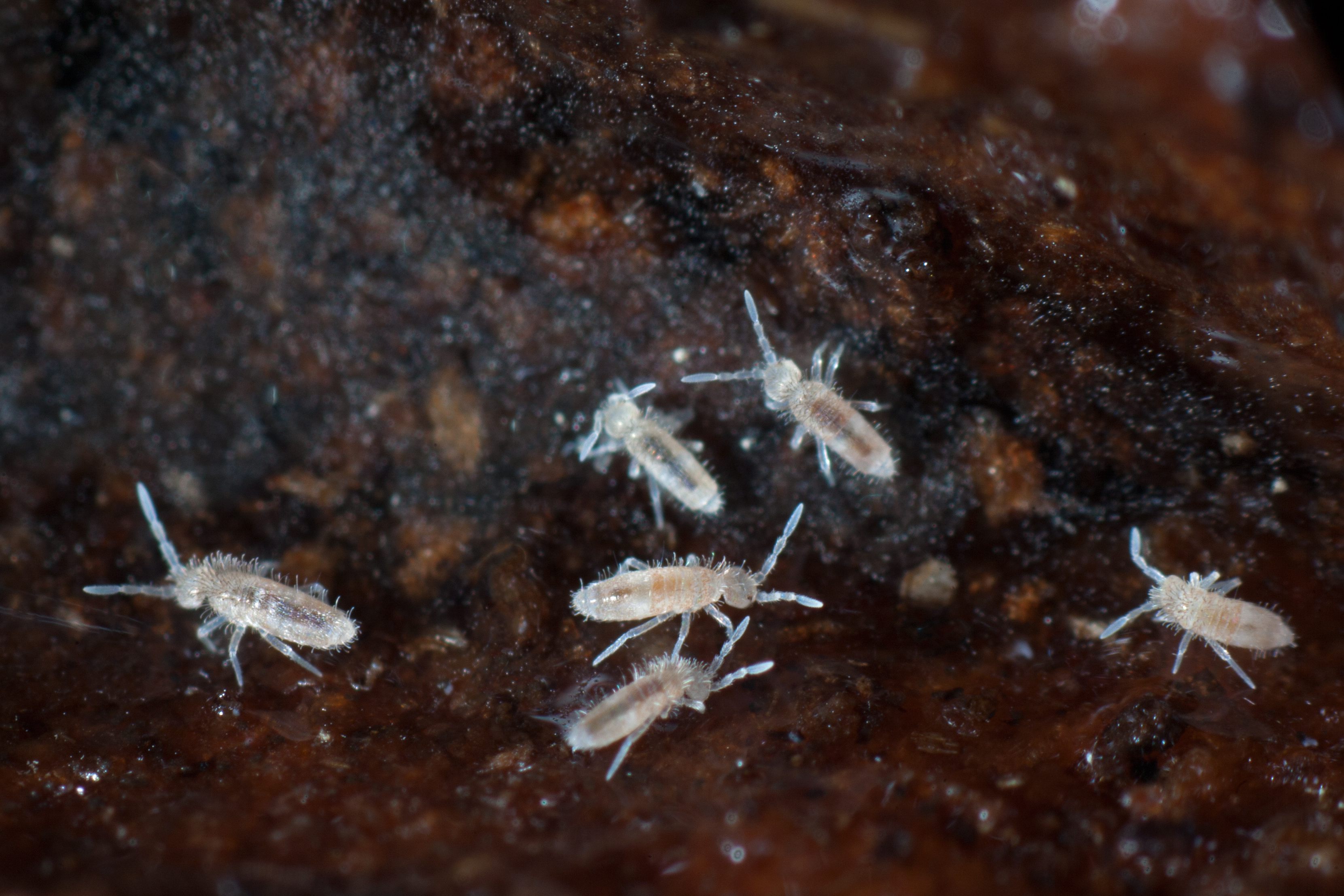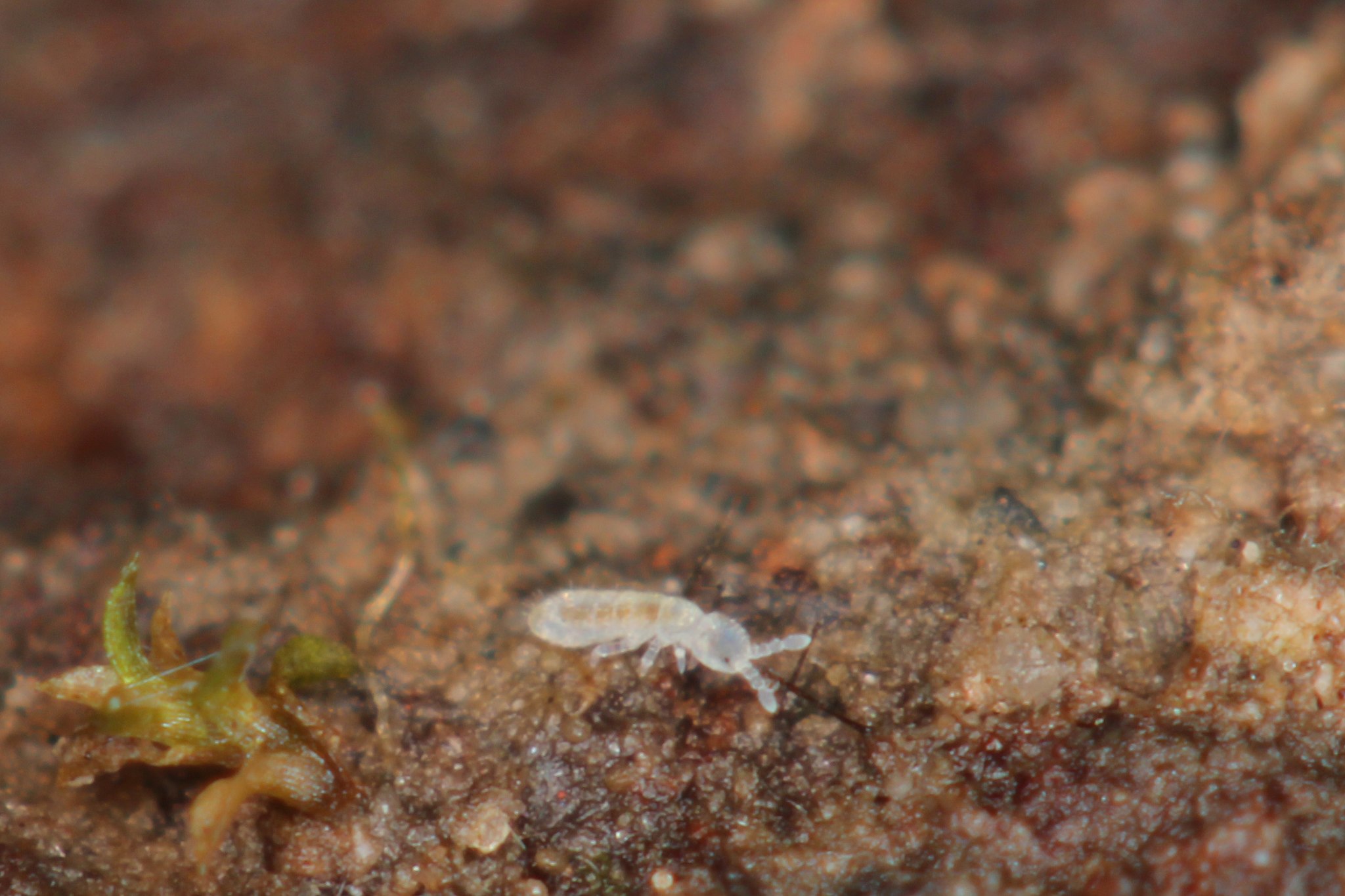What are springtails?
Springtails are harmless to your plant. They get their name from the fact that they can jump into the air using their tails when disturbed. This insect relative can be found anywhere damp.

What to do now
It's not necessary to treat your plants against springtails, as they are harmless and even beneficial. However, if their presence bothers you here are some tips on how to reduce them:
Carefully remove the plant from the pot, remove all the old soil and clean off the roots.
Clean the pots and all tools you're using while repotting
Repot it with new fresh soil and make sure the new soil is free from springtails
If you want to be sure that your soil is free from springtails, or if the soil you've just removed is fairly new, you can sterilize it with heat to kill off any living microorganisms in the soil
Water less in the future. As Springtails are attracted to moisture, ensuring that your plant dries out properly between waterings is the most effective way to deter them from taking hold in the first place

Common questions
What do they look like?
They vary in size and color depending on their environment and food source. The most common ones found in the soil of your houseplants typically appear to the naked eye as pale/white, tiny and wingless. They’re often found in clusters and jump up in the air when disturbed. Springtails are tiny: between around 1/32 and 1/8th of an inch in length (or around 1-2 mm) depending on the exact type.
What do they eat?
Springtails feed on microbes, fungi, and decomposing material in the soil. They won't harm your plant—in fact, they're beneficial as they help break down mold and decomposing leaves that fall onto the soil.
Do they bite humans?
They are harmless and do not bite, nor do they spread any diseases. They are more of a helpful nuisance than a pest.
When do springtails tend to appear?
Springtail infestations can occur at any time of the year.
Where should I look for them?
They can occur both indoors and outdoors. However, if the weather outside gets too damp (i.e. if soil becomes completely saturated or dries out completely), they will migrate inside via any available opening. These include: underneath doors, through small cracks in the walls and via windows. They will then settle in damp areas such as in your bathroom or basement. You can also look out for them on window sills, and, of course, in the soil of potted plants - especially if these plants have particularly damp soil.
Can I prevent this in the future?
Springtails are difficult to prevent. They can come in with plants that you've kept outside, or plants that you've just brought home. If you want to prevent any springtails from spreading to your other plants, you can place newly acquired plants, and plants you've brought from the outdoors, in quarantine. Repot them if necessary and avoid sharing trays. But then again, they won't harm your plant so this isn't necessary unless you think they are unpleasant.